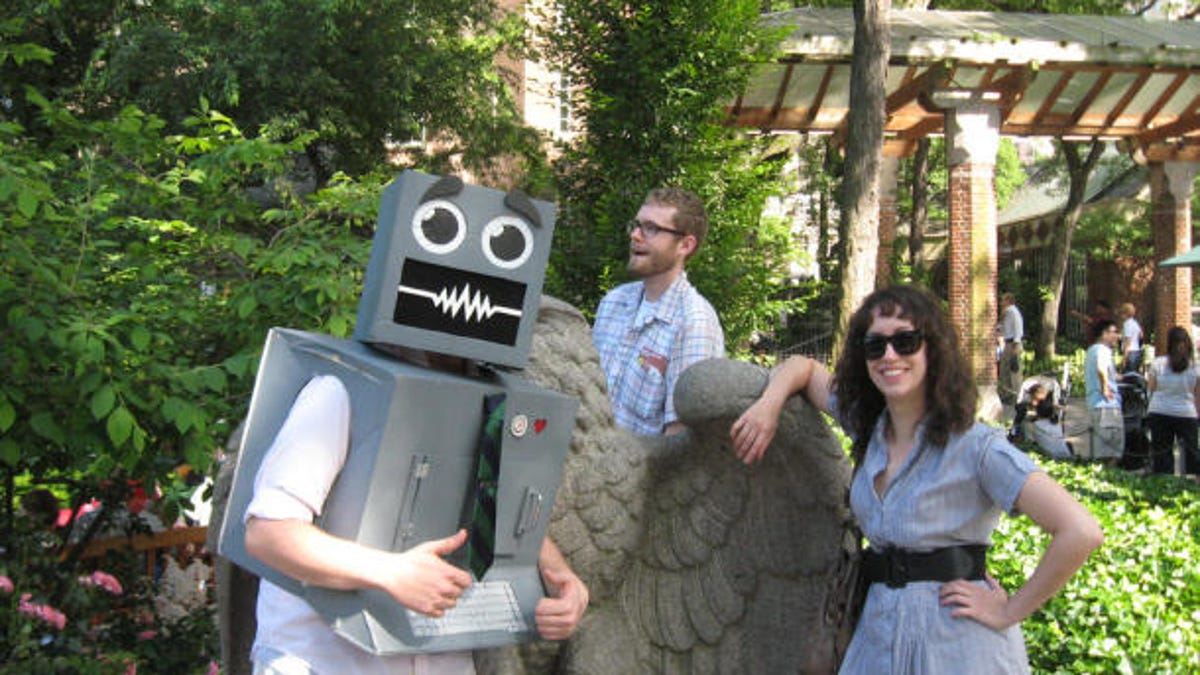Are we in the Matrix? Science looks for signs we're not real
Some say the odds are good that we're living in a computer simulation, and a few researchers think they might know how to find out the truth.

Over the years, some science fiction has popularized the notion that our world might not be what it seems -- that we might all be living in the Matrix (to use perhaps the most well-known version of the concept).
In the past decade, philosophers and physicists have started to take the idea a bit more seriously, led by philosopher Nick Bostrom, who first published his paper "Are You Living in a Computer Simulation?" in Philosophical Quarterly in 2003. Basically, Bostrom argues that the exponential growth of computing power seems to indicate that one day we'll be able to create a digital simulation of our entire universe. There's also no reason to think multiple simulations wouldn't be created once the capability is there.
So...we're either living in the only real universe just on the verge of being able to create a simulation of its historical self, or we're in one of what could be a multitude of computer simulations. When we look at it this way, it would almost seem that the existential odds are against our actually existing.
But how do we test the hypothesis? If our world is fake, where are the edges? Where are the metaphorical cliffs no one seems able to climb, the borders we never cross? And, even more compelling, where is that threshold that Jim Carrey crosses at the end of "The Truman Show" to enter the "world" beyond the simulation?
Turns out we might be able to begin to answer these questions with the help of science -- or at least the simulated science that defines the constraints of a world in which we're all numerical representations of living things, if that turns out to be the case.
For the past year, researchers at the University of Washington led by physics professor Martin Savage have been promoting a possible solution. They think they might know where to look to find the tells or limitations that could indicate we're not real.
The basic idea is to look at the very limited simulations of the smallest building blocks of our universe that computers in our world are able to create today, and then search for a tell or "signature" that seems to be present in both the world we live in and the most humble simulations we've done so far.
"If you make the simulations big enough, something like our universe should emerge," Savage said in a release. "Then it would be a matter of looking for a 'signature' in our universe that has an analog in the current small-scale simulations."
How do you spot a simulation from inside
In case your brain is already starting to hurt, let's recap. We already know a little something about simulating the universe because we've begun to pursue it ourselves. So far, we can reliably simulate electromagnetism and what's known as the "strong force" (no, not that Force, but well, kinda) that binds subatomic particles like quarks together. As computing power grows exponentially, we'll be able to simulate atoms and molecules and theoretically even organisms and the entire universe.
Assuming that all computer simulations today and in the future have to operate off a finite amount of computing resources, they would need to cheat a little when drawing up a comprehensive universe. Specifically, with finite computing resources it should be impossible to simulate what the scientists call "continuum space time" and infinite volume (let's avoid the crash course in physics and just stipulate that these are things that are part of our universe that would require infinite resources to simulate).
Operating under this limitation, a simulation would need to substitute an algorithm or some other similar technology for these elements that can't be fully simulated. This is the kind of "cheat" I'm talking about that would leave the "signatures" that Savage and his team hope to search for.
The telltale sign we're not real
So where's the signature that will tell us that our universe began with a gentle keystroke rather than a big bang?
There's a whole lot of physics and detail behind the possible answer to that question (much of which you can find here), but essentially Savage and his team think it could show up in our world as a limitation in ultra-high-energy cosmic rays.
The final word is that if we're in a computer simulation, these cosmic rays would actually reflect the structure that the simulation is built upon (Savage and company imagine it to be like the lattice structure that supercomputers currently use to create the aforementioned simulations we're already working on).
Problem is that these cosmic rays are rare and it could take some time to collect enough data to begin peeling back the paint of our universe to see if the walls have been constructed from ones and zeros rather than actual wood.
We are not digital slaves
Even if our world turns out to be more science fiction than science fact, there is a bit of good news. The researchers say it's not likely that we're the digital slaves of some dark overlord a la the Matrix, or being manipulated by some unseen producers as in "The Truman Show."
The idea is that once you turn on a simulation with all the building blocks and forces of nature at play, something similar to our world should eventually emerge. And then simulations within that simulation will be turned on, and then... Sheesh, I need to lie down; and I don't care if it's on a bed of down or digits.

